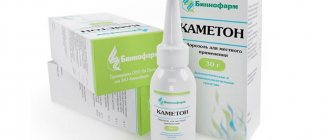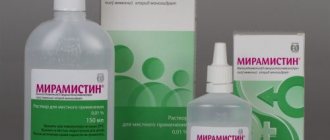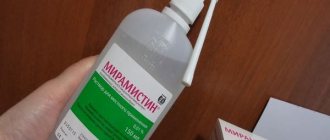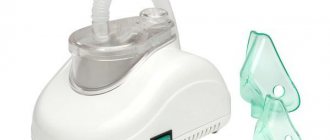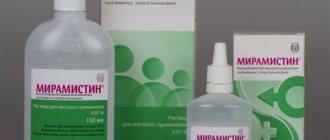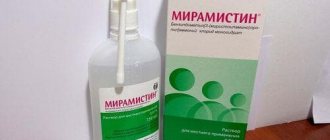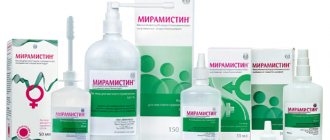Symptoms
Symptoms of laryngitis differ in acute and chronic forms. Acute inflammation of the larynx is accompanied by:
- deterioration of the body's condition;
- increased temperature;
- leukocytosis and acceleration of ESR in the blood;
- pain when swallowing;
- hoarseness of voice;
- difficulty breathing, sore throat;
- first dry and then wet cough.
Chronic laryngitis is characterized by the same symptoms, but intensified. In addition, the following are added:
- hoarse voice and rapid fatigue;
- frequent coughing, sore throat, sore throat.
Treatment
In the treatment of laryngitis, the most important thing is to get rid of the causes that caused it. First of all, you should protect your voice as much as possible. It is also necessary not to smoke, drink alcohol or eat spicy foods to avoid irritation of the larynx.
As treatment, doctors prescribe mandatory warm drinks, rinsing, inhalations, compresses, and medications. All treatment is possible at home, but only on the recommendations of a therapist! In case of chronic inflammation, a complete examination under the supervision of a specialist is necessary. Sometimes its treatment is treated with inhalations and physiotherapy. But most often it is impossible to do without serious medications, and sometimes without surgical intervention.
Folk remedies in the treatment of laryngitis
At the initial stage of inflammation of the larynx (not chronic), it is possible to prevent the development of the disease using traditional folk methods. First of all, evening foot baths using mustard will help. In the event that your voice is hoarse or has completely disappeared, these drinks will help:
- warm milk with honey;
- decoction of anise with honey and cognac;
- tincture based on dried raspberries, ginger and sunflower oil.
In addition, the following procedures are useful for laryngitis:
- compresses on the throat (hot scarf lubricated with laundry soap);
- grated carrots covered in honey (a spoonful 4-5 times a day);
- warm potato juice;
- inhalation;
- rinsing with mint decoction.
If the symptoms of laryngitis do not go away within 2-3 days, you should urgently consult a doctor (pediatrician, therapist, otolaryngologist).
Miramistin
One of the most common medications prescribed by medical professionals for laryngitis is miramistin. This medication belongs to the group of local antiseptics used in the treatment of many pathologies.
This wide range of actions is also facilitated by the fact that Miramistin is available in various forms: ointment, aerosol, solution. This medicine is especially actively used in the treatment of children, since it does not have an unpleasant taste or smell for them. In addition, the components included in its composition are absolutely safe. This means that the drug can be used even during pregnancy and breastfeeding.
It is not difficult to guess that such a safe drug has practically no contraindications or side effects. The only thing that can cause unpleasant consequences is individual intolerance to the elements that make up the medicine.
Miramistin in the treatment of laryngitis
Aerosol Miramistin is actively used in the prevention and treatment of various types of colds and infectious diseases. It is especially effective in the initial stages of the disease, when serious consequences can still be avoided. Miramistin for laryngitis is usually prescribed by doctors for the complex treatment of acute and chronic pathologies. For the desired result, it is recommended to rinse with a solution of this drug every two to three hours. Miramistin is actively used for laryngitis in children. For this, a spray is used to treat the oral mucosa. It is safe and does not lead to allergic reactions or irritation, which is very important when treating young children.
Source: nosoglot.ru
How can Miramistin be replaced?
Today, many antiseptics with varying degrees of effectiveness, various side effects, taste and other characteristics are available for purchase in pharmacies. All of them are analogues of a drug such as Miramistin:
- Tantum Verde. The active component helps relieve inflammation. It is characterized by an anesthetic effect, although it is not an antibacterial agent. Tantum Verde is used from 6 years of age, while Miramistin is allowed for use even by infants.
- Lysobacter. Unlike Miramistin, it is used directly for the treatment of throat and dental pathologies; it is produced only in tablets. It is considered an antiseptic, so it is possible to make an equivalent choice. The drugs are not structural analogues, but have a similar effect.
- Inhalipt. Refers to antibacterial combined anti-inflammatory drugs. Unlike Miramistin, it is used only for pathologies of the larynx and oral cavity, and is released as an aerosol. Inhalipt is acceptable for use from 3 years of age; it is prohibited for use by pregnant women and while breastfeeding. Like Miramistin, during use it can cause a slight burning sensation and allergies, but generally such phenomena disappear in the shortest possible time or are not observed at all.
- Rotokan. The drug is classified as an antiseptic of natural origin. It includes extracts of calendula, yarrow, and chamomile. The medicine is characterized by an anti-inflammatory effect, helps restore mucous membranes, stops bleeding, eliminates spasms and pain in the oral cavity. It has higher antiseptic characteristics than Miramistin.
- Chlorhexidine. It is considered to be the most similar drug in action to Miramistin. It also takes effect when the pathogen that caused the inflammation is no longer resistant to it. Chlorhexidine is more often prescribed for external use, since side effects often occur during mucosal therapy. To cure a throat with laryngitis, in particular in susceptible patients who are prone to allergic reactions, it is advisable to use Miramistin. This will prevent possible side effects of Chlorhexidine. In many situations, when this analogue is used in short courses, unpleasant consequences occur infrequently.
How does the drug work?
The antiseptic has a number of properties that help in the treatment of various diseases of the upper respiratory tract. The medication for laryngitis helps to quickly eliminate the main symptoms: sore throat, sore throat, cough, hoarseness and lump in the throat through local action.
Pathology occurs as a result of a lingering cold, viral or bacterial infection. The antiseptic is suitable for the treatment of any form of the disease and has a variety of therapeutic properties, including:
- antiseptic effect (allows you to relieve swelling in the throat, soreness, dryness, inflammation, hoarseness in the voice);
- antiviral (it has been proven that complex influenza viruses, coronoviruses, HIV, herpes, etc. are highly sensitive to the drug);
- fungicidal property (Miramistin inhibits almost all known and common microorganisms);
- antibacterial (allows you to eliminate infections caused by bacteria).
Miramistin is indicated for severe lesions of the larynx. Due to the wide antibiotic spectrum of action, the medication helps to cure the protracted stage of the disease and associated complications.
Indications for use
The instructions for use of Miramistin provide not only for the treatment of laryngitis with Miramistin. The drug is active against many pathologies of the upper respiratory tract, which has a positive effect on therapy accompanied by complications.
Miramistin can be used for diseases:
- tonsillitis,
- pharyngitis,
- angina,
- sinusitis,
- otitis.
It is important to know! Inhalation of Miramistin for laryngitis is recommended for use at the initial stage of the disease. It is better to use the drug in the form of a spray and solution for actively developing symptoms of the disease.
Briefly about the drug
Laryngitis is an inflammatory process in the throat that covers the vocal cords and is provoked by microorganisms of viral or bacterial origin. Miramistin belongs to the antiseptic group of drugs; its pharmacological effect is to disrupt the cell membrane of microorganisms, leading to the disintegration of the pathogen. Active against gram-positive and gram-negative bacteria (staphylococci, streptococci, salmonella), fungi (candida, aspergillus), protozoa (chlamydia) and viruses. Does not penetrate into the deep layers of the epithelium and is not absorbed into the blood. The active ingredient is benzyldimethyl propylammonium chloride monohydrate.
Today it is an effective drug that copes with the overwhelming number of bacterial and viral pathogens.
Possessing resistance against complex viruses (herpes, HIV) and infections, Miramistin is used in medical institutions as a means of preventing the spread of nosocomial strains that are not sensitive to antibiotics. The composition of the medicine does not include aggressive components, therefore its use is indicated both for pregnant and nursing mothers, and for children from an early age. The ability of the drug to quickly heal damage makes it unique in the treatment of a wide range of diseases, therefore Miramistin is irreplaceable for laryngitis in adults, because the etiology of the disease is not at all important for the medicine.
Instructions for use
Miramistin can be used to treat laryngitis from 3 years of age. The complex of therapy includes rinsing, inhalation, or throat irrigation. It is recommended to give Miramistin to children with laryngitis in the following dosage, depending on the age characteristics of the child.
| Age | Inhalations | Irrigation | Rinsing |
| 3-6 | It is advisable to use a nebulizer. 2-4 ml. solution depending on the degree of the disease. One-time knocking technique. | Using a spray in one click. It is necessary to perform 3-4 irrigations per day. | 5 ml. solution per glass of boiled water. Rinse up to 3 times a day after meals. |
| 7-14 | 2-4 ml., 1-2 times a day. | Two presses, 4 irrigations per day. | 5 ml. solution per glass of boiled water. Rinse up to 3 times a day after meals. |
According to the instructions, Miramistin for laryngitis in adults can also be used in the form of irrigation, rinsing, and inhalation. The dosage depends on the form of influence on the pathology:
- for rinsing use 15 ml. the drug in a glass of water (5 times a day, after meals);
- for inhalation – 4 ml., 2 times a day;
- irrigation – 3-4 presses per procedure, 4 times a day.
Reviews about the treatment of diseases with Miramistin in adults and children have positive dynamics. Most people note relief from symptoms of the disease after 2-3 days. Before using an antiseptic, you should consult a specialist.
Source: pillsman.org
Miramistin for pharyngitis: method of application
Pharyngitis is an inflammation of the mucous membrane of the pharynx, which can be acute or chronic (with exacerbations).
The disease is caused by various bacteria, viruses, fungi, and can be caused by exposure to a toxic substance. Treatment of any disease is aimed at eliminating the factor that caused it. Miramistin for pharyngitis is prescribed as a spray or solution for gargling. A spray nozzle is included with the medicine bottle. The algorithm for using the nozzle is no different from that in similar preparations.
Method of using Miramistin for pharyngitis:
- Remove the protective cap from the bottle.
- Open the protective packaging and take out the special nozzle.
- Connect the sprayer and bottle.
- Press the nozzle again twice.
The can of the drug is ready for use.
Irrigation of the oral mucosa and pharynx is effective if pharyngitis caused by sensitive flora is diagnosed.
The dose of the drug required to treat the disease and the number of applications are calculated by the attending physician, taking into account clinical recommendations and the individual characteristics of the patient. The recommendations for the method of using Miramistin for pharyngitis indicate that it is necessary to irrigate the pharyngeal mucosa by pressing the sprayer 3-4 times. More often they take 3, less often - 4 times a day.
In the form of a solution, Miramistin is used in an amount of 10–15 ml per rinse. It is necessary to gargle with Miramistin at the same frequency as irrigating the mucous membrane with a spray.
When gargling or irrigating the pharyngeal mucosa, the drug should not be swallowed. Use with caution in combination with other medications.
How does the drug work?
The antiseptic has a number of properties that help in the treatment of various diseases of the upper respiratory tract. The medication for laryngitis helps to quickly eliminate the main symptoms: sore throat, sore throat, cough, hoarseness and lump in the throat through local action.
Pathology occurs as a result of a lingering cold, viral or bacterial infection. The antiseptic is suitable for the treatment of any form of the disease and has a variety of therapeutic properties, including:
- antiseptic effect (allows you to relieve swelling in the throat, soreness, dryness, inflammation, hoarseness in the voice);
- antiviral (it has been proven that complex influenza viruses, coronoviruses, HIV, herpes, etc. are highly sensitive to the drug);
- fungicidal property (Miramistin inhibits almost all known and common microorganisms);
- antibacterial (allows you to eliminate infections caused by bacteria).
Miramistin is indicated for severe lesions of the larynx. Due to the wide antibiotic spectrum of action, the medication helps to cure the protracted stage of the disease and associated complications.
Indications for use
The instructions for use of Miramistin provide not only for the treatment of laryngitis with Miramistin. The drug is active against many pathologies of the upper respiratory tract, which has a positive effect on therapy accompanied by complications.
Miramistin can be used for diseases:
- tonsillitis,
- pharyngitis,
- angina,
- sinusitis,
- otitis.
It is important to know! Inhalation of Miramistin for laryngitis is recommended for use at the initial stage of the disease. It is better to use the drug in the form of a spray and solution for actively developing symptoms of the disease.
How to use for laryngitis
Three popular ways to use Miramistin for laryngitis are:
- inhalation
- throat irrigation
- rinsing
Studies have shown that the most preferable method is inhalation due to the complete coverage of the affected areas of the throat with the components of the drug. The method helps to deactivate pathogenic organisms on the mucous membrane of the larynx, where it is much more difficult for the medicine to reach by other means. In addition, when Miramistin gets on the vocal cords when inhaled, it restores their functions and cures aphonia. In case of acute laryngitis, 2 weeks of inhalations are enough to get rid of the symptoms of the disease. For children and adults, it is recommended to use a nebulizer for effective inhalation. Superficial laryngitis resolves within 6-8 days of therapy.
The use of an aerosol form has also been found to be effective. The advantages of the spray are that it can be used anywhere and at any time, without loss of effectiveness compared to inhalations. Therapy lasts no more than 5 days due to the development of addiction to the substance. The aerosol form is popular in the treatment of children: Miramistin for loss of voice allows you to quickly relieve inflammation, restore the functionality of ligaments, and sanitize the oropharynx without causing allergic manifestations or side effects.
Gargling with Miramistin solution is a common method used with equal success in both adults and children.
Positive dynamics from the use of Miramistin appears 2-3 days from the start of therapy for any form of the disease. But only with a mild form of laryngitis, Miramistin will become a panacea without additional prescriptions: in the case of a complicated form, it will become an additional drug against the background of antipyretic, anti-inflammatory and analgesic drugs prescribed by the otolaryngologist.
Instructions for use
Miramistin can be used to treat laryngitis from 3 years of age. The complex of therapy includes rinsing, inhalation, or throat irrigation. It is recommended to give Miramistin to children with laryngitis in the following dosage, depending on the age characteristics of the child.
| Age | Inhalations | Irrigation | Rinsing |
| 3-6 | It is advisable to use a nebulizer. 2-4 ml. solution depending on the degree of the disease. One-time knocking technique. | Using a spray in one click. It is necessary to perform 3-4 irrigations per day. | 5 ml. solution per glass of boiled water. Rinse up to 3 times a day after meals. |
| 7-14 | 2-4 ml., 1-2 times a day. | Two presses, 4 irrigations per day. | 5 ml. solution per glass of boiled water. Rinse up to 3 times a day after meals. |
According to the instructions, Miramistin for laryngitis in adults can also be used in the form of irrigation, rinsing, and inhalation. The dosage depends on the form of influence on the pathology:
- for rinsing use 15 ml. the drug in a glass of water (5 times a day, after meals);
- for inhalation – 4 ml., 2 times a day;
- irrigation – 3-4 presses per procedure, 4 times a day.
Reviews about the treatment of diseases with Miramistin in adults and children have positive dynamics. Most people note relief from symptoms of the disease after 2-3 days. Before using an antiseptic, you should consult a specialist.
Source: pillsman.org
Doses for children and adults
The dosage of the drug varies depending on age:
- Adults and children over 14 years of age use Miramistin in the amount of 10-15 ml.
- Children over 7 years old take 7 ml.
- At the age of 3-6 years, 5 ml of medicinal infusion is used for rinsing. Doctors recommend diluting a similar dose in warm water in a ratio of 1 to 1.
For infants, the product is also diluted, but 3-5 drops are dripped into the throat, in order to prevent infection, eliminate inflammation and reduce swelling and redness. It should be noted that such age may become an obstacle to using the medicine. Therefore, the use of Miramistin by infants should be agreed with a doctor.
The frequency of taking the drug during the day is 4-5 times. The duration of treatment varies depending on the severity of the throat inflammation. Minimum quantity – 4 days. For gargling, the product is used in purchased form, diluted only for children.
Miramistin is used for therapeutic purposes during pregnancy, but there are certain details, for example, you should not swallow liquid during manipulation. It is possible to use the medicine even in the 1st trimester, since it has been proven that its use does not affect the formation of the fetus. The components of the medication do not reach the baby through the placenta.
Gargling is also acceptable during lactation. The active components are not absorbed into the bloodstream and do not penetrate milk, as they act at the local level. Based on this, we can conclude that Miramistin will be an effective and harmless drug even when treating pregnant and breastfeeding women.
A burning sensation on the mucous membrane of the larynx.
Miramistin: composition, properties, application
Miramistin is a universal antiseptic that was originally developed for astronauts. When flying into space, astronauts spend a long time in a confined space. Miramistin was intended for treating surfaces and human skin.
The drug has a pronounced antimicrobial effect, which allows it to be used in many ways: it is used to treat burns, cuts, purulent ulcers, genitals before manipulations and operations; ENT doctors recommend spraying Miramistin into children’s throats for the prevention and treatment of viral diseases.
Miramistin gained the greatest popularity as a prophylactic against various sexually transmitted diseases and STDs. However, the use of this drug in practice is very wide. It is considered the most effective in the treatment of bacterial and viral infections, diseases of the nose, throat, and respiratory tract.
The main active ingredient is benzyldimethyl ammonium chloride monohydrate.
It has an antimicrobial effect. Excipient: pure water.
Therapeutic effect of Miramistin:
- Antimicrobial action. The active substance of the drug penetrates the cell of a foreign microorganism and destroys it. The cells of the body do not suffer, as they have a different structure.
- Antibacterial action. Miramistin is effective in combating various bacteria. This is a broad-spectrum drug. However, doctors do not recommend giving up antibiotics, since Miramistin does not replace them, it only reduces the resistance of bacteria to other drugs.
- Antifungal action. Miramistin also destroys many fungi. It is recommended for candidiasis and other fungal diseases.
- Immunostimulating effect. The drug is able to increase local immunity and enhance the protective properties of tissues.
- High hypersmolarity. This means that a certain volume of the drug contains a large number of active particles. This allows you to effectively fight viruses, bacteria, fungi, get rid of pus and quickly wash the affected areas of the body.
- Gentle effect on fabrics. Miramistin has a gentle effect on body tissues, without causing allergies and irritation, burning and pain. This allows it to be used to treat children.
Contraindications and side effects
Miramistin is truly a win-win drug: having a wide spectrum of action, used for a variety of diseases, when used correctly, it has no side effects. In rare cases, exceptions include:
- individual intolerance to the Miramistin component in the drug;
- a feeling of tingling, burning at the site of inflammation when using Miramistin;
- The patient's age is less than 3 years.
An overdose of the drug causes nausea, loss of orientation, and a burning sensation in the mucous membrane of the throat. But the symptoms are rare and short-term, and since the drug has a local effect and does not enter the general bloodstream, the symptoms do not require special treatment.
For what throat diseases is the drug prescribed to children?
In ENT practice, Miramistin is often prescribed to treat affected tissues. It can be used to treat children from three years of age (if necessary, to treat younger children with the permission of a doctor).
The advantages of the drug are its safety and low allergenicity, which is important when treating a child. Miramistin is tasteless and odorless, and is also available in a convenient bottle with a sprayer, which allows you to quickly irrigate a child’s throat and maintain a safe dosage. Miramistin allows not only to stop the inflammatory process, but also to eliminate sore throat and sore throat in a child.
Miramistin can be prescribed in childhood for the following diseases:
- ARVI. Acute respiratory viral infection in a child occurs in different ways. In some cases there is only a runny nose, in others there is a cough and fever. For any course of the disease, Miramistin can be used to treat the child’s nose and throat. This will not only relieve inflammation and cleanse tissues of viruses and accumulated mucus, but also prevent various complications.
- Flu. Influenza is also a viral infection, but it is more severe and often leads to various undesirable consequences. In young children, the disease can be more severe, so treatment should begin as soon as the first symptoms appear. Miramistin allows you to cleanse the mucous membranes of the throat and nose, significantly reducing the likelihood of complications.
- Tonsillitis. Tonsillitis most often occurs in children of primary school and preschool age. This is an infectious disease that primarily affects the tonsils. The cause of the disease can be viruses and bacteria. Miramistin allows you to actively fight bacteria. The drug can be treated or gargled, irrigated tonsils.
- Pharyngitis. With pharyngitis, the mucous membrane of the pharynx is affected, but the tonsils are not affected. This disease is accompanied by severe sore throat. Miramistin allows you to relieve inflammation and speed up recovery from pharyngitis of any etiology (as an independent viral disease or as a complication after the flu).
- Laryngitis. Laryngitis often affects the vocal cords. Miramistin helps to quickly relieve inflammation and eliminate pain.
Dosage and rules of use
Miramistin is considered a safe drug, but it is necessary to follow the dosage when treating a child. A large amount of antiseptic can cause soreness, dryness, and the child also swallows the medicine while irrigating the throat, which can lead to disturbances in the functioning of the stomach.
Before using the drug, you must read the instructions. There are rules for using Miramistin that will make the treatment effective and safe.
Miramistin can be used regularly up to 4 times a day. For a child, one click on the sprayer is enough. This is a safe dose and will not cause harm even if swallowed. Miramistin should be used in courses. For throat diseases, you need to continue treatment with the drug for at least 3 days to consolidate the effect. The optimal course of treatment is 5-10 days.
Older children can gargle with Miramistin.
Approximately 5-7 ml of Miramistin is diluted with boiled water in a 1:1 ratio. You need to gargle with this solution 3-4 times a day throughout the day. It is very important to explain to your child that the solution should not be swallowed. Even a diluted drug if swallowed can cause irritation of the stomach walls.
Miramistin is not able to replace all drugs. It is recommended to combine it with aerosols to relieve sore throat, with antibiotics and antiviral drugs. Miramistin enhances the effect of many drugs.
The drug can be used for inhalation in the treatment of the upper respiratory tract. For these purposes, it is recommended to use an ultrasonic nebulizer. The dosage of the drug is determined by the doctor. It must be diluted with saline solution, otherwise tissue irritation may occur. Inhalations are carried out 1-2 times a day.
More information about the drug Miramistin can be found in the video:
If the drug is used to rinse the nose, it should be spat out as soon as it flows into the throat. For small children, it is better to simply irrigate the throat and nose by pressing the sprayer once.
If there are ulcers due to stomatitis or sore throat, you can treat them with Miramistin using sterile gauze. This may trigger a gag reflex in young children, so caution must be exercised. To treat adenoids (enlarged tonsils), you need to lay the child on his back and place a bolster or pillow under the neck so that the head hangs down slightly. Miramistin is instilled into the nose; it is with this use that the tonsils can be well treated.
Rules for gargling with Miramistin
To achieve the maximum therapeutic effect from rinsing, you need to learn how to perform the manipulation correctly.
- Gargling should continue for at least 5 minutes.
- During the manipulation, the head should be slightly tilted upward so that the product does not penetrate into the nasopharynx.
- To better rinse the larynx, it is permissible to pronounce the sound “s”.
- If the solution with which the patient gargles begins to foam, it should be spat out.
- During the rinsing process, the patient should try to stretch the lower jaw forward in order to treat hard-to-reach areas of the throat.
- After the procedure is completed, it is not recommended to take food or liquid for 30 minutes.
- It is necessary to use the medicine for rinsing half an hour after a meal.
- The solution for the procedure must be warm.
It is permissible to alternate rinsing with the product in question with infusions of medicinal herbs (chamomile, calendula, sage) or a solution with salt.
How to rinse the larynx with Miramistin.



